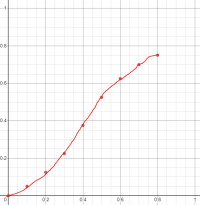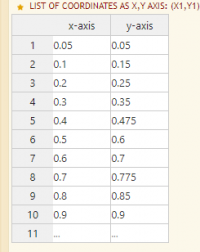Hello. I'm looking for a formula to somewhat fit the graph attached: 
It needs to start off shallow, be steep in the middle and then become shallow again towards the end. I would like to put in a number from 0 to 1 and have the formula return roughly where it would be on the graph.
If anyone can solve this, thank you.

It needs to start off shallow, be steep in the middle and then become shallow again towards the end. I would like to put in a number from 0 to 1 and have the formula return roughly where it would be on the graph.
If anyone can solve this, thank you.


